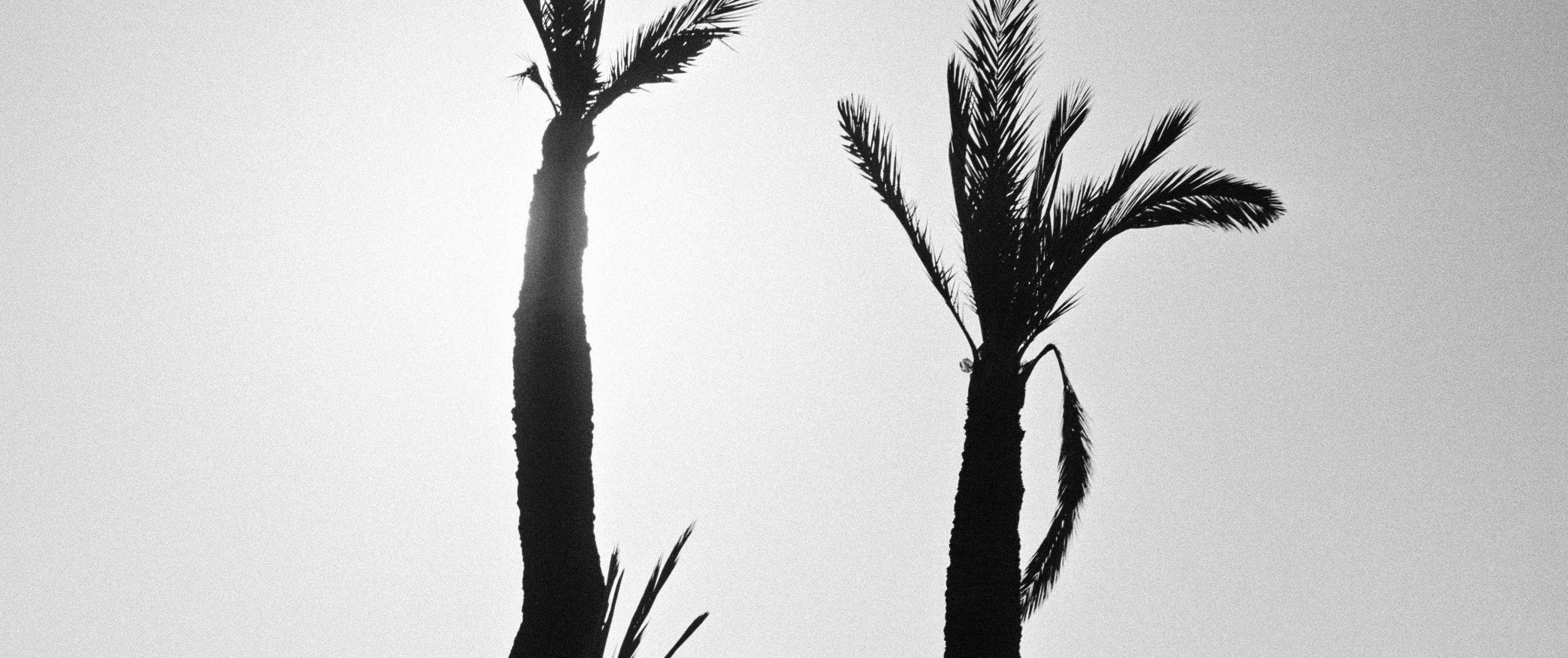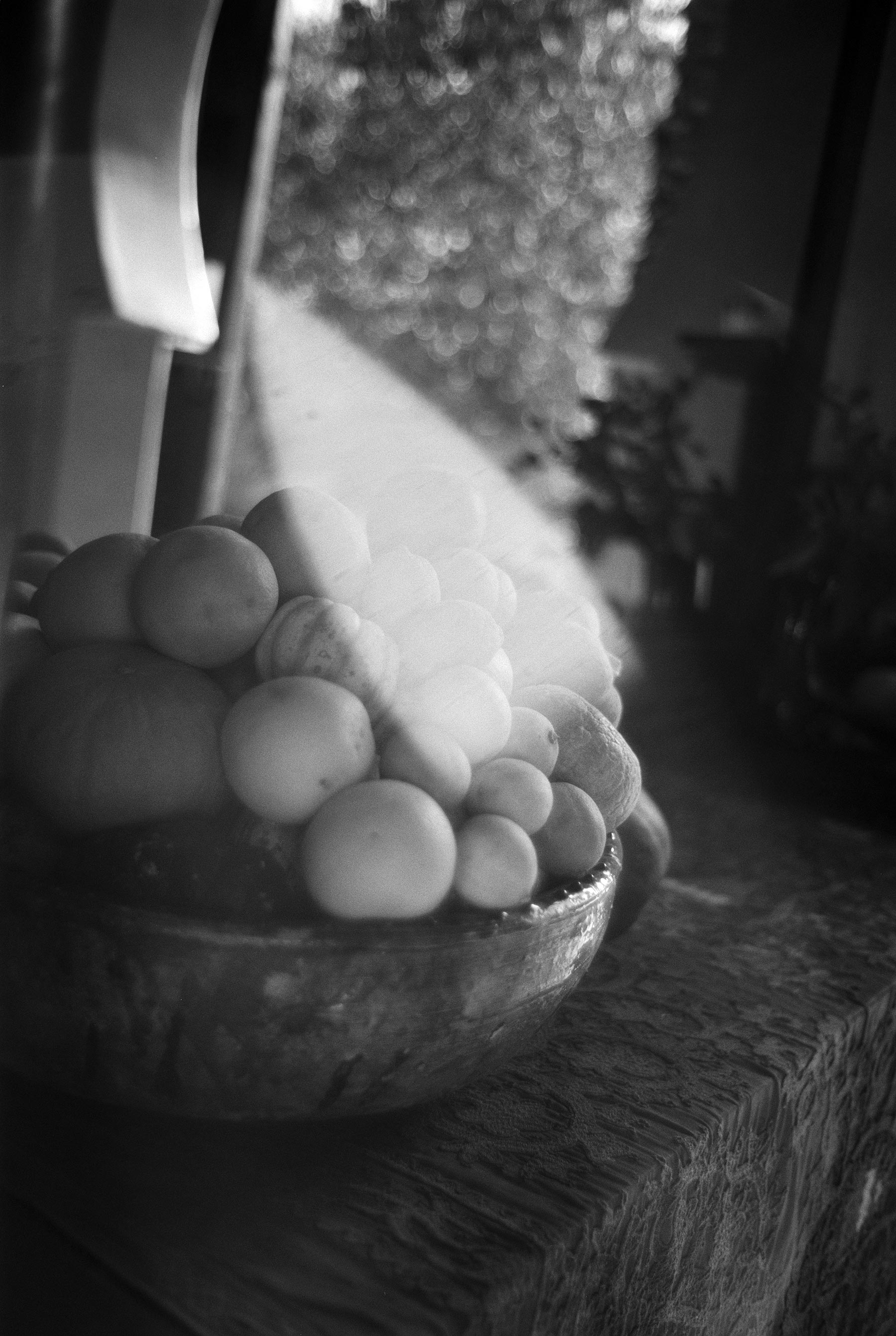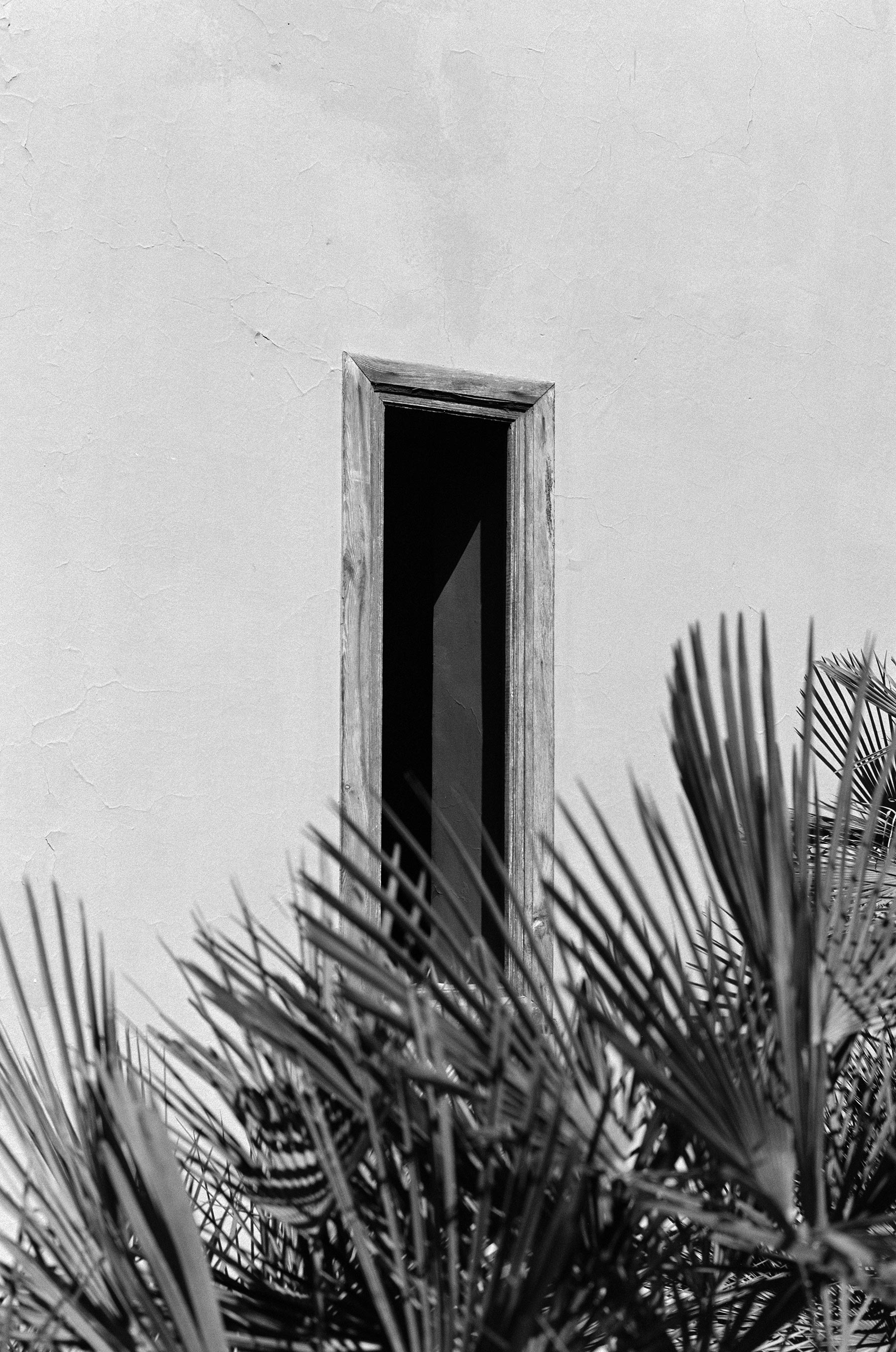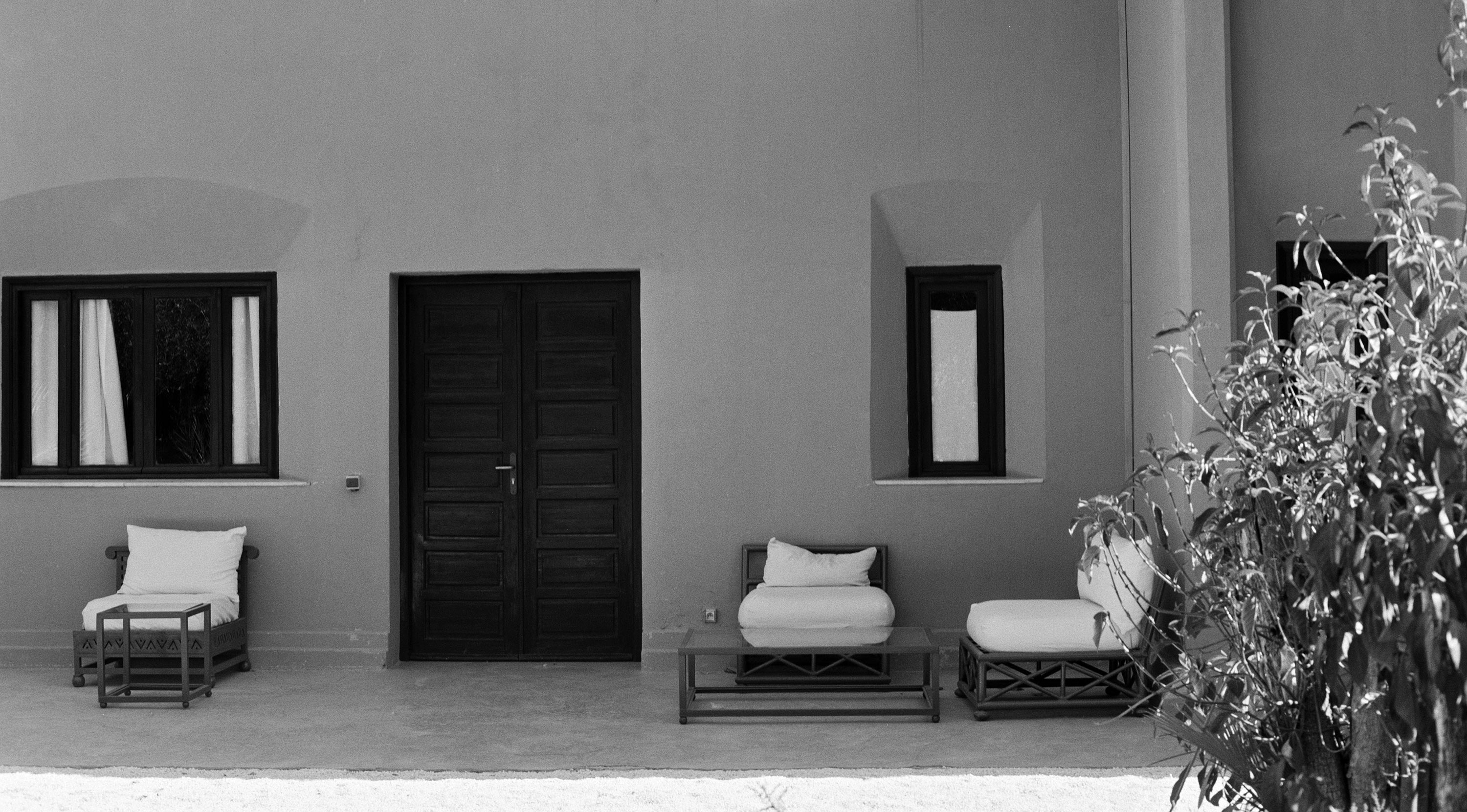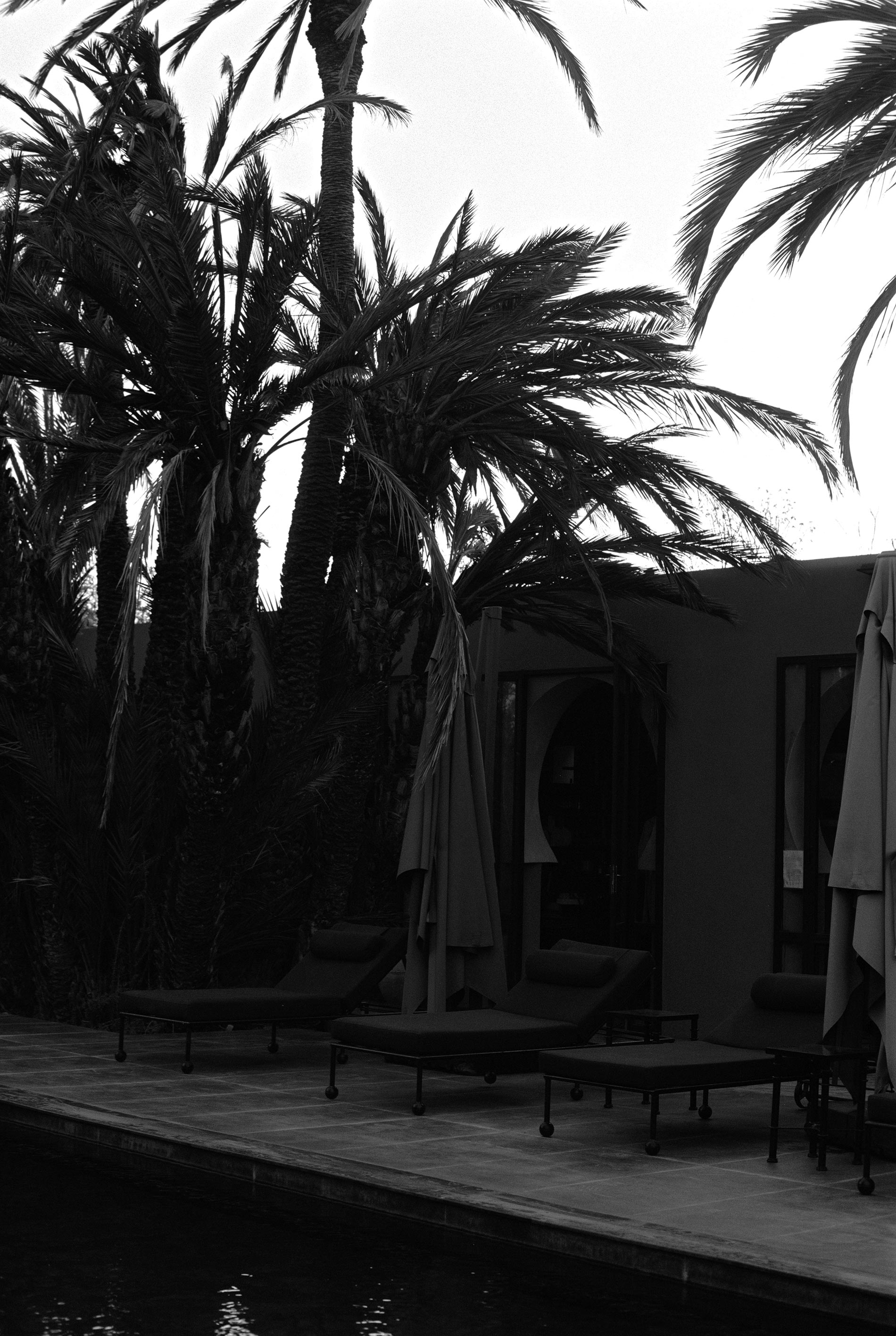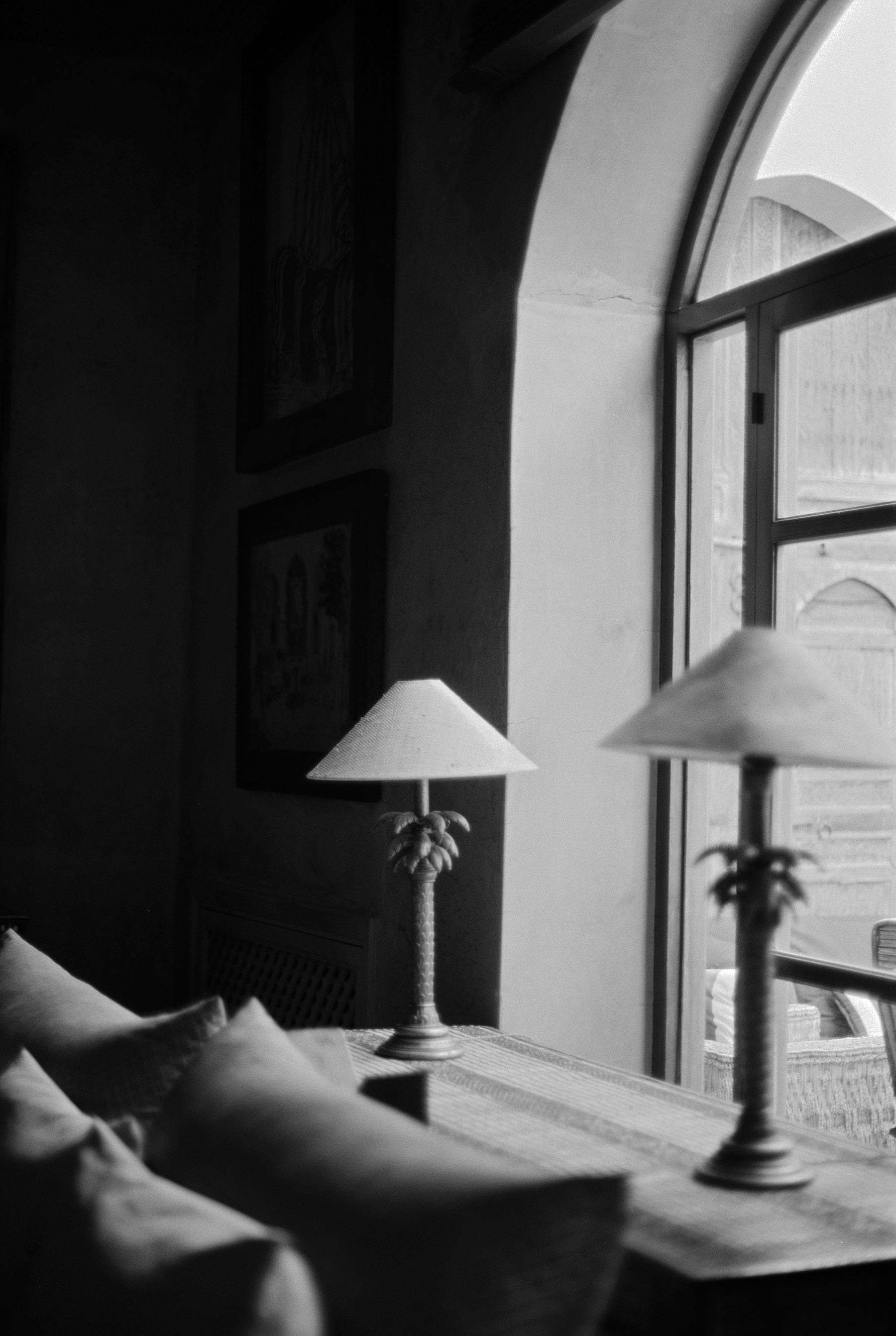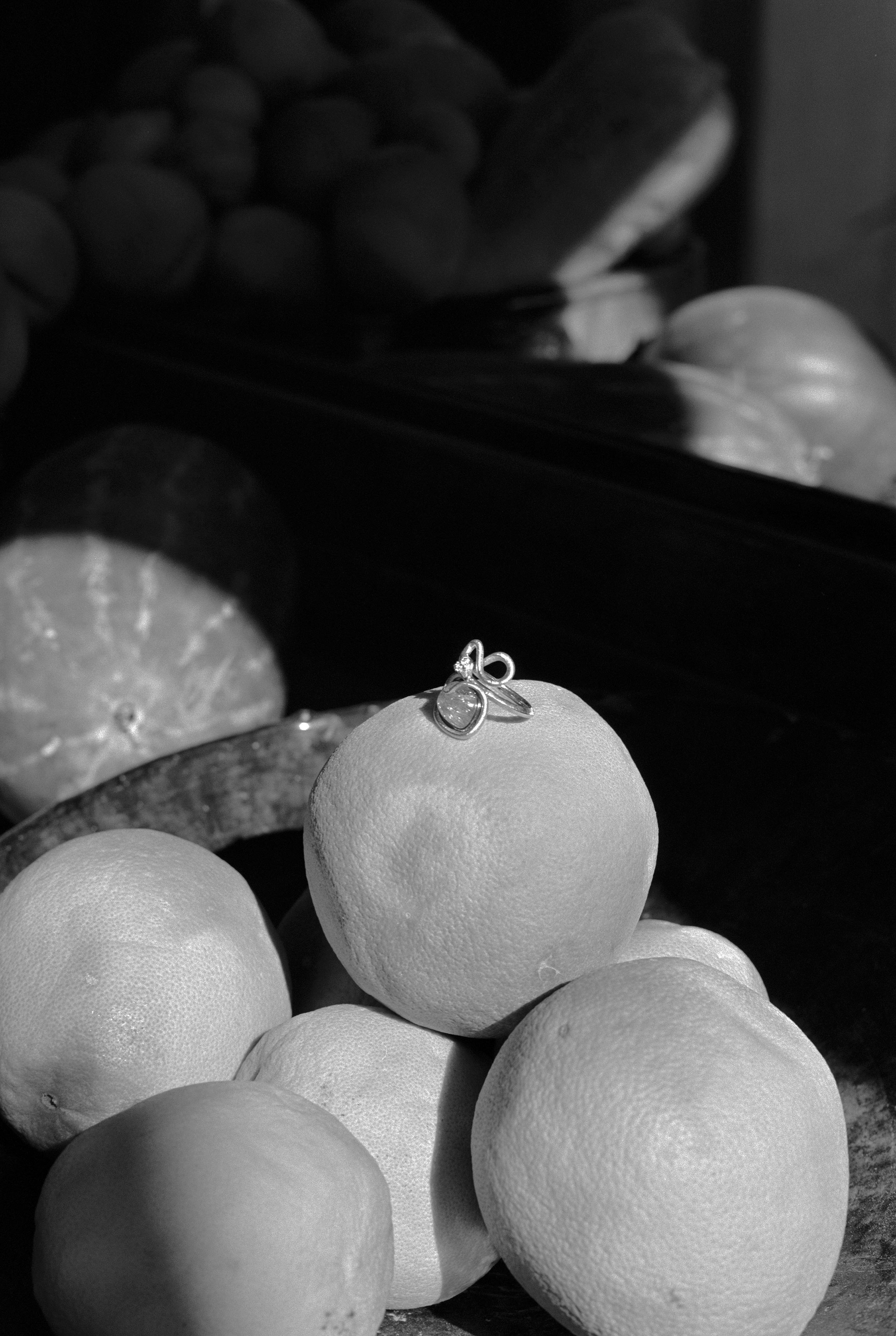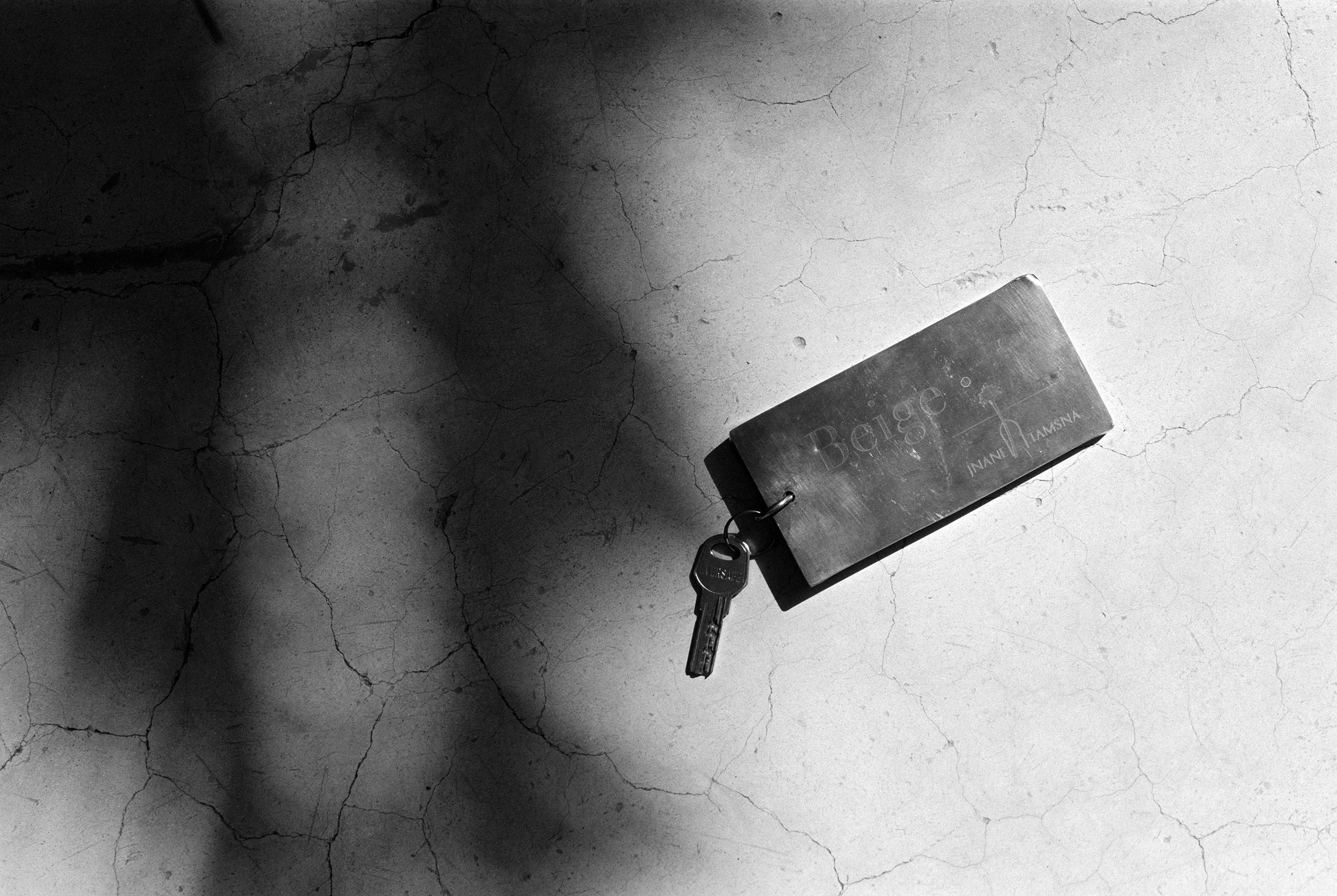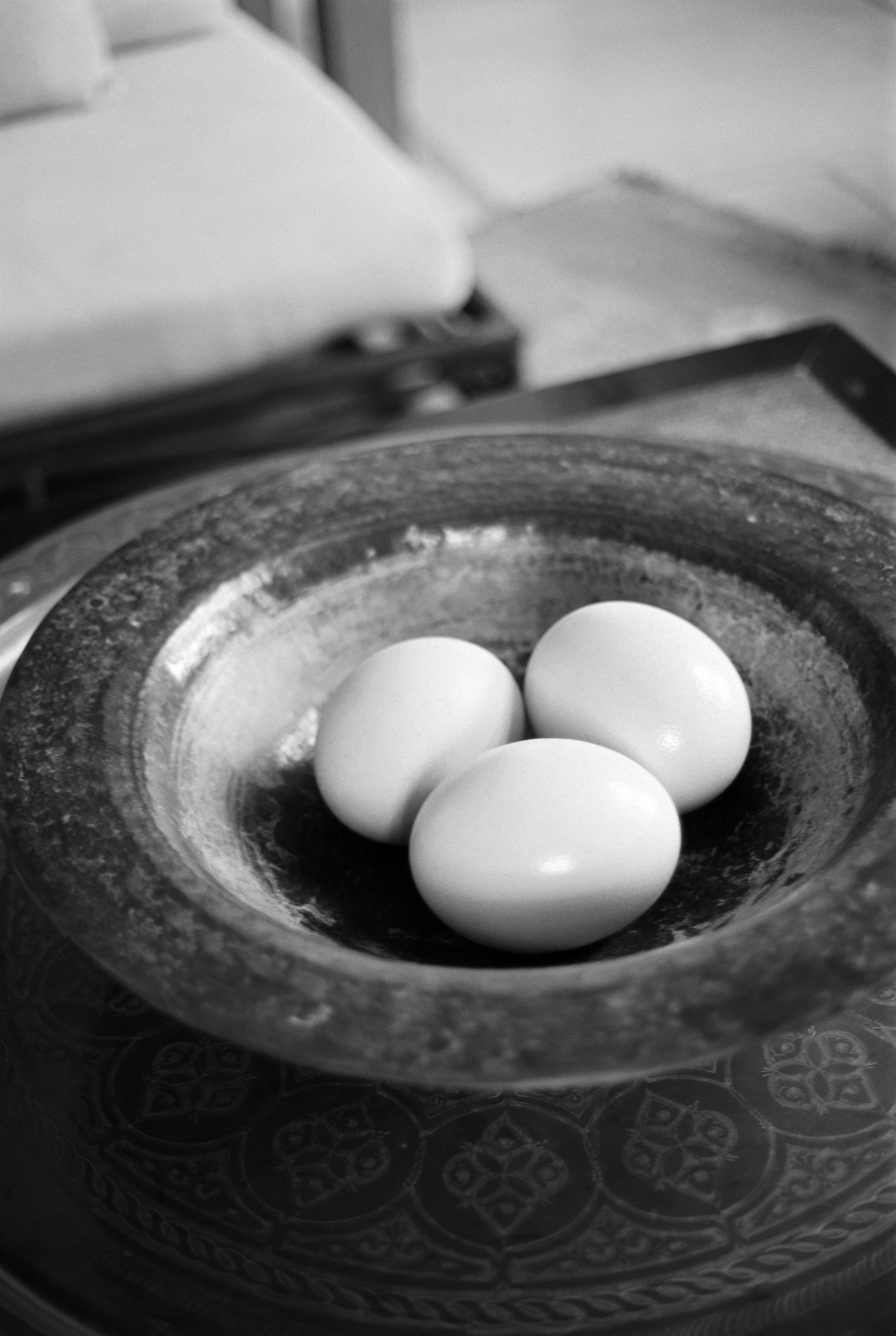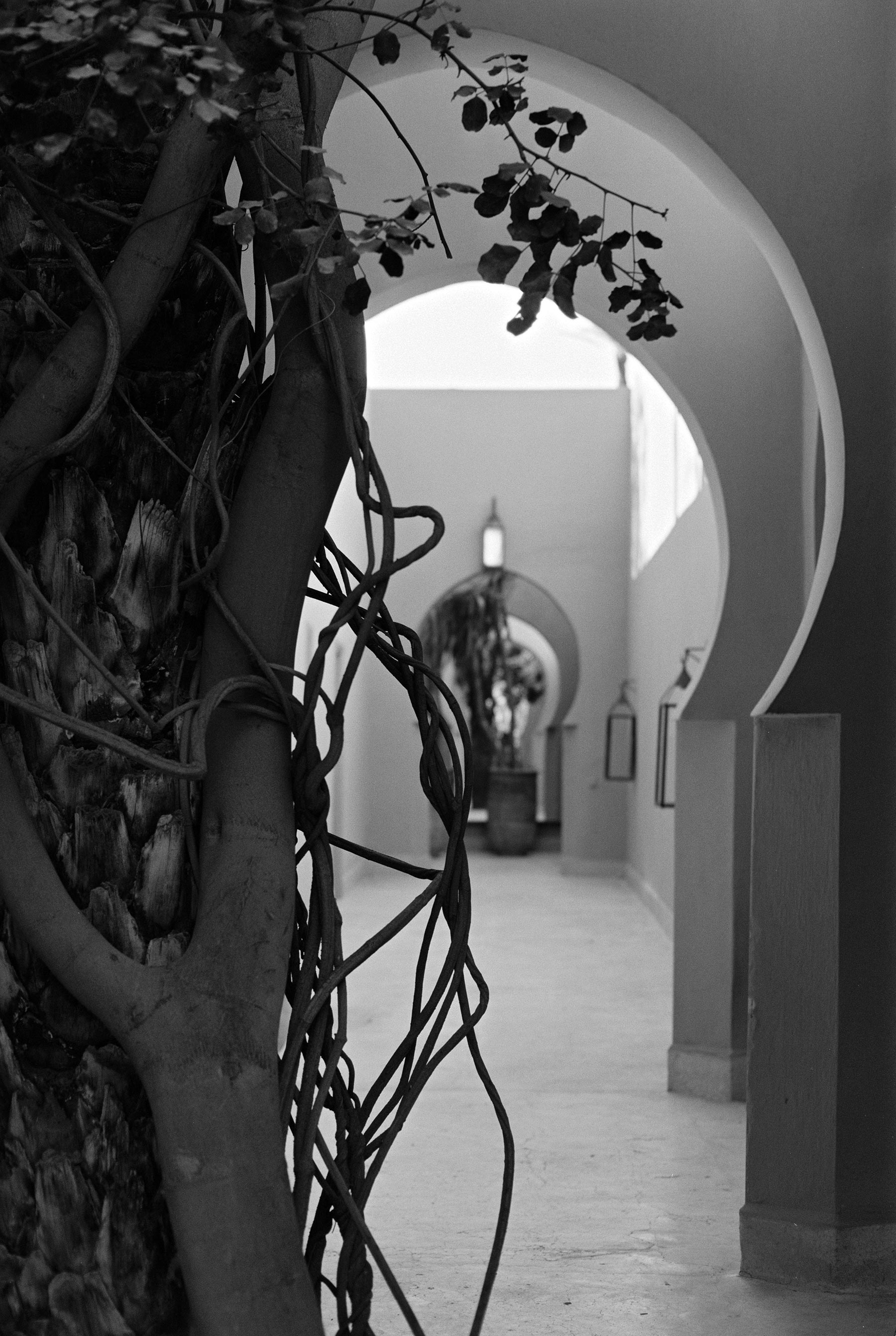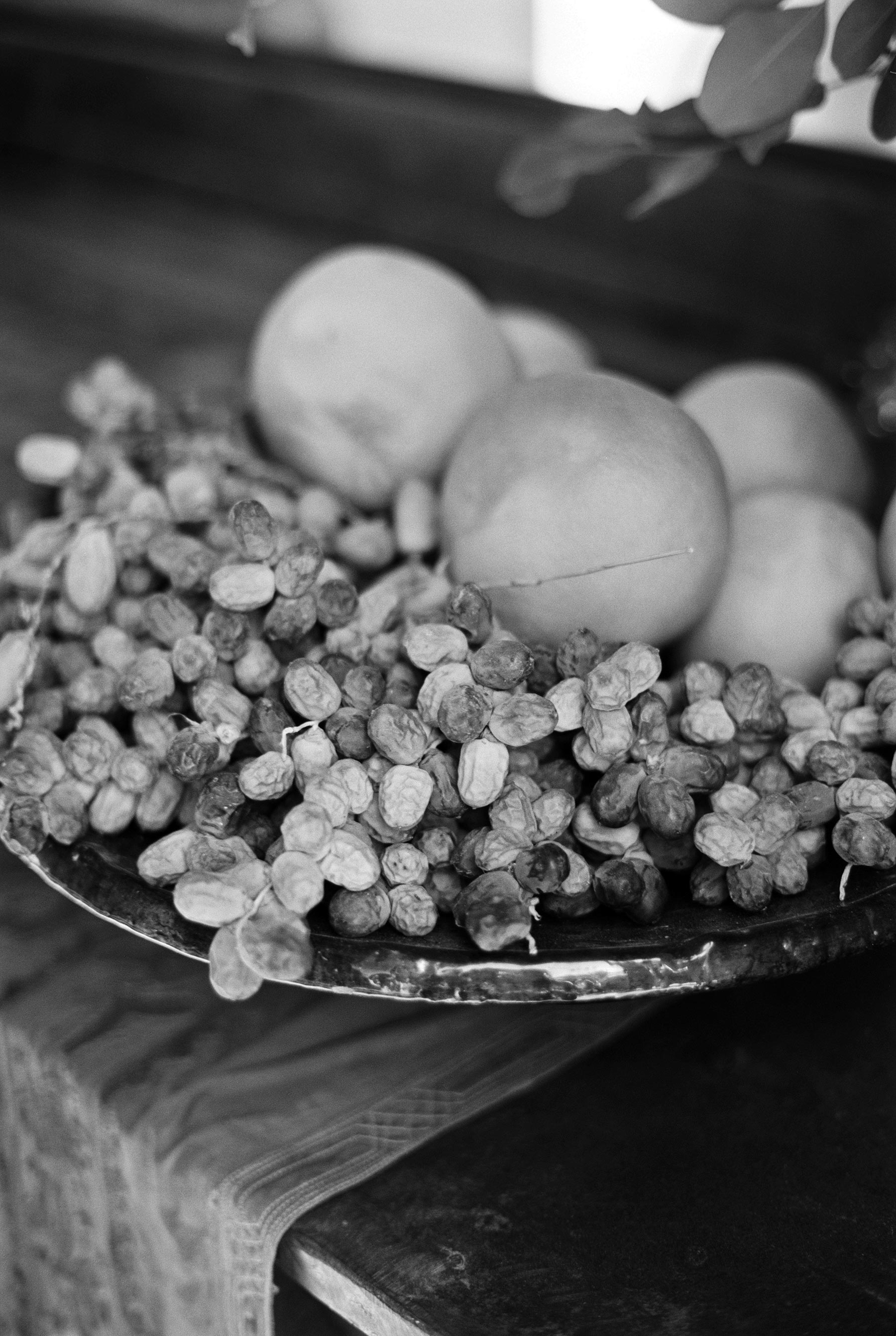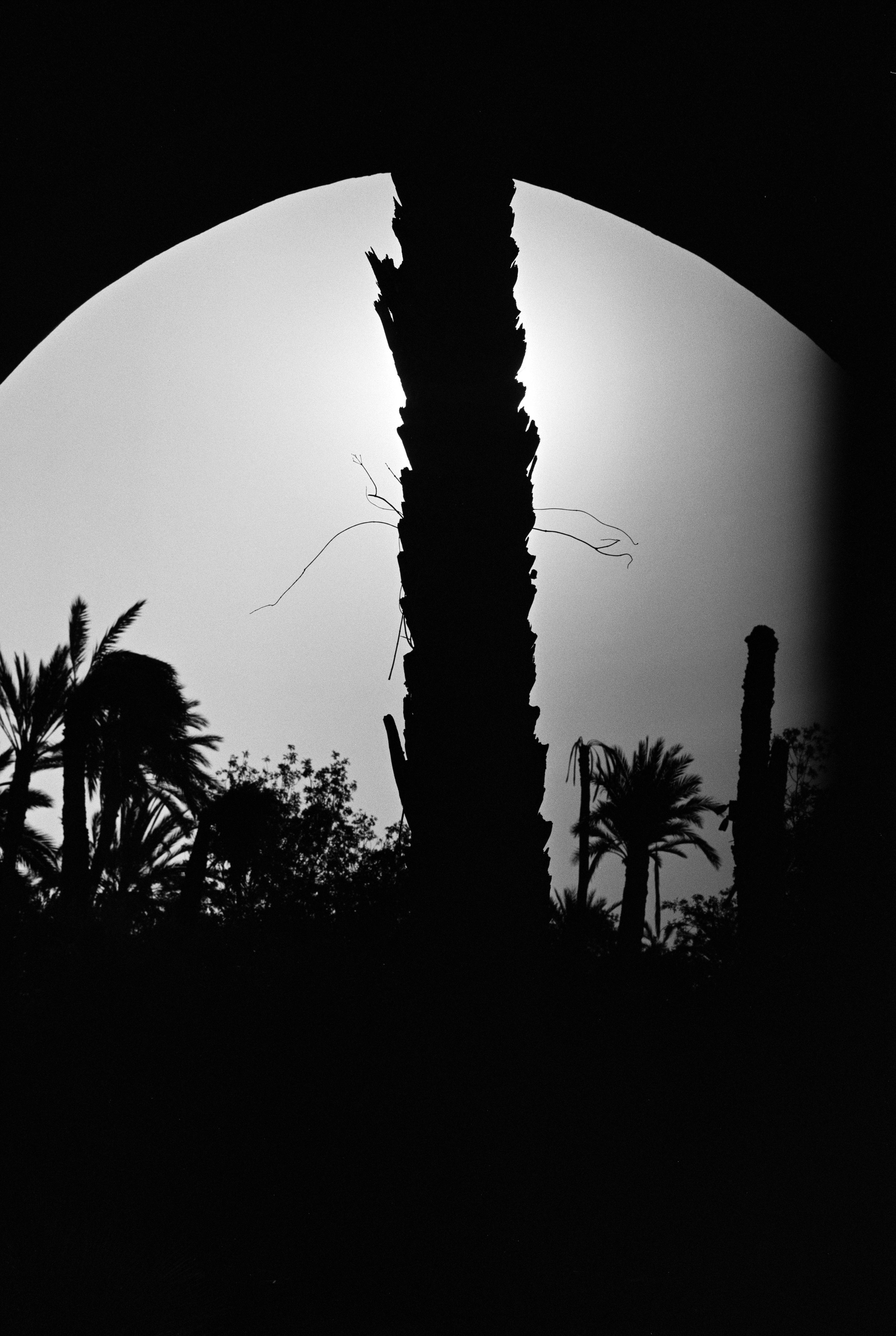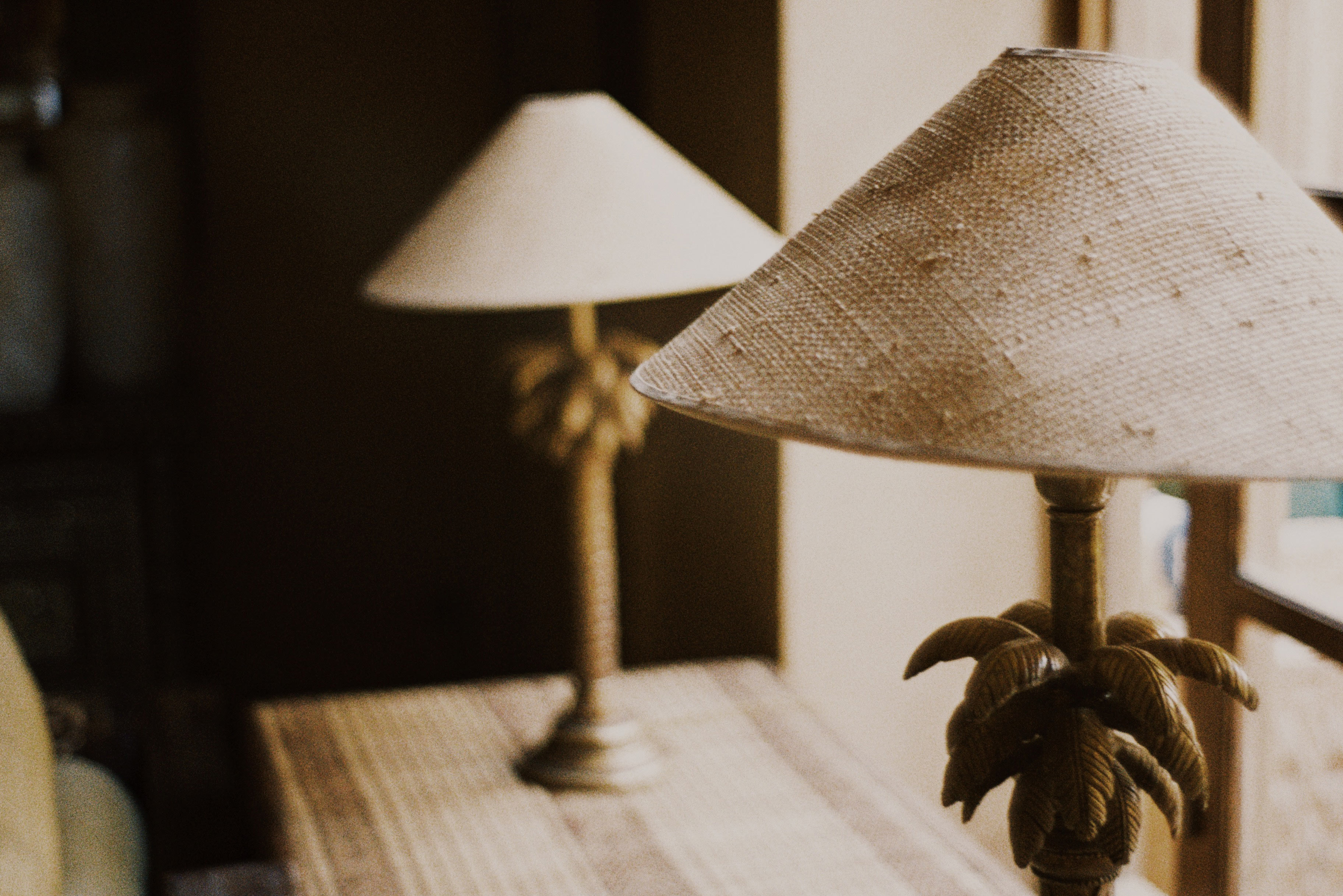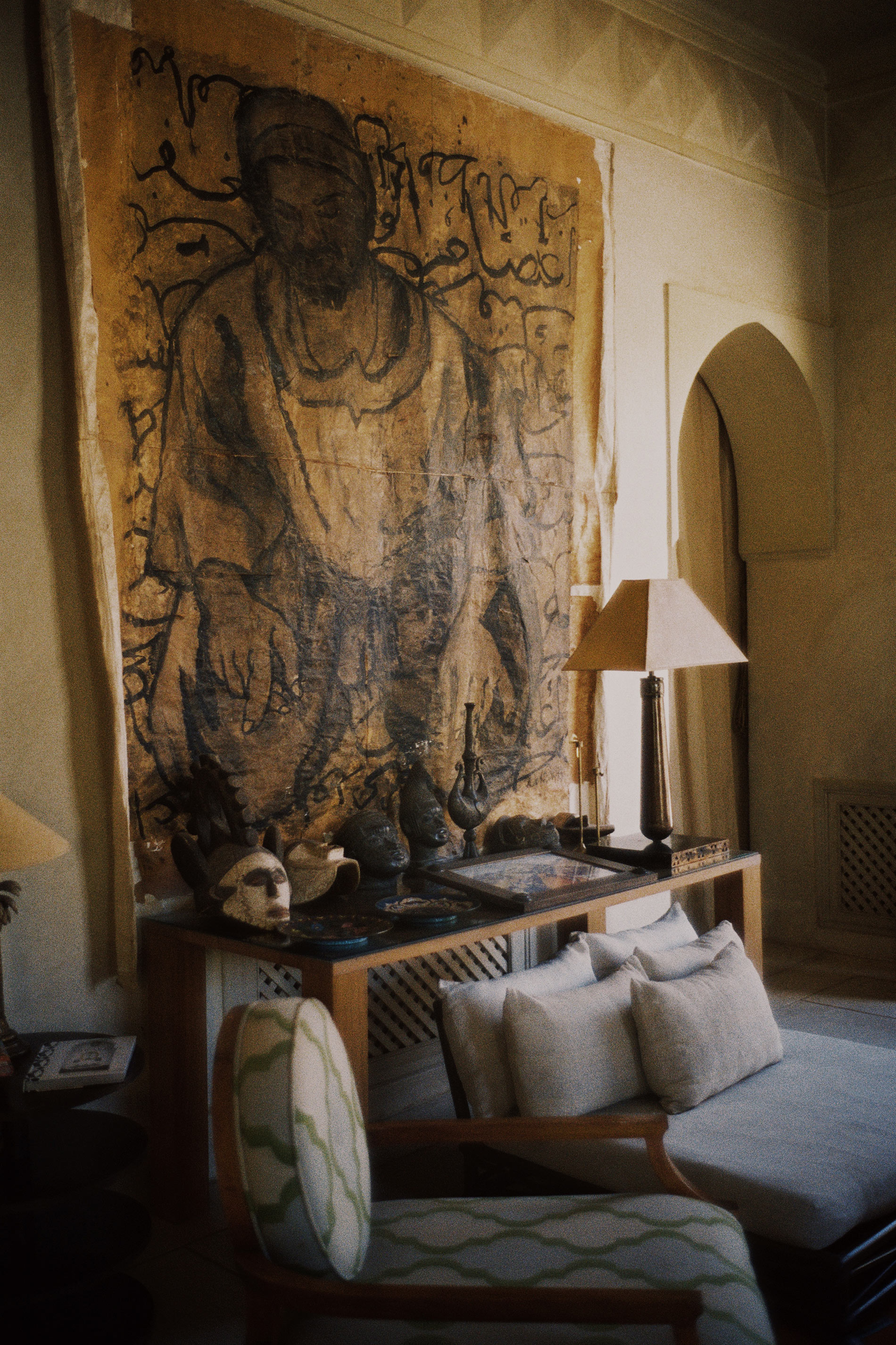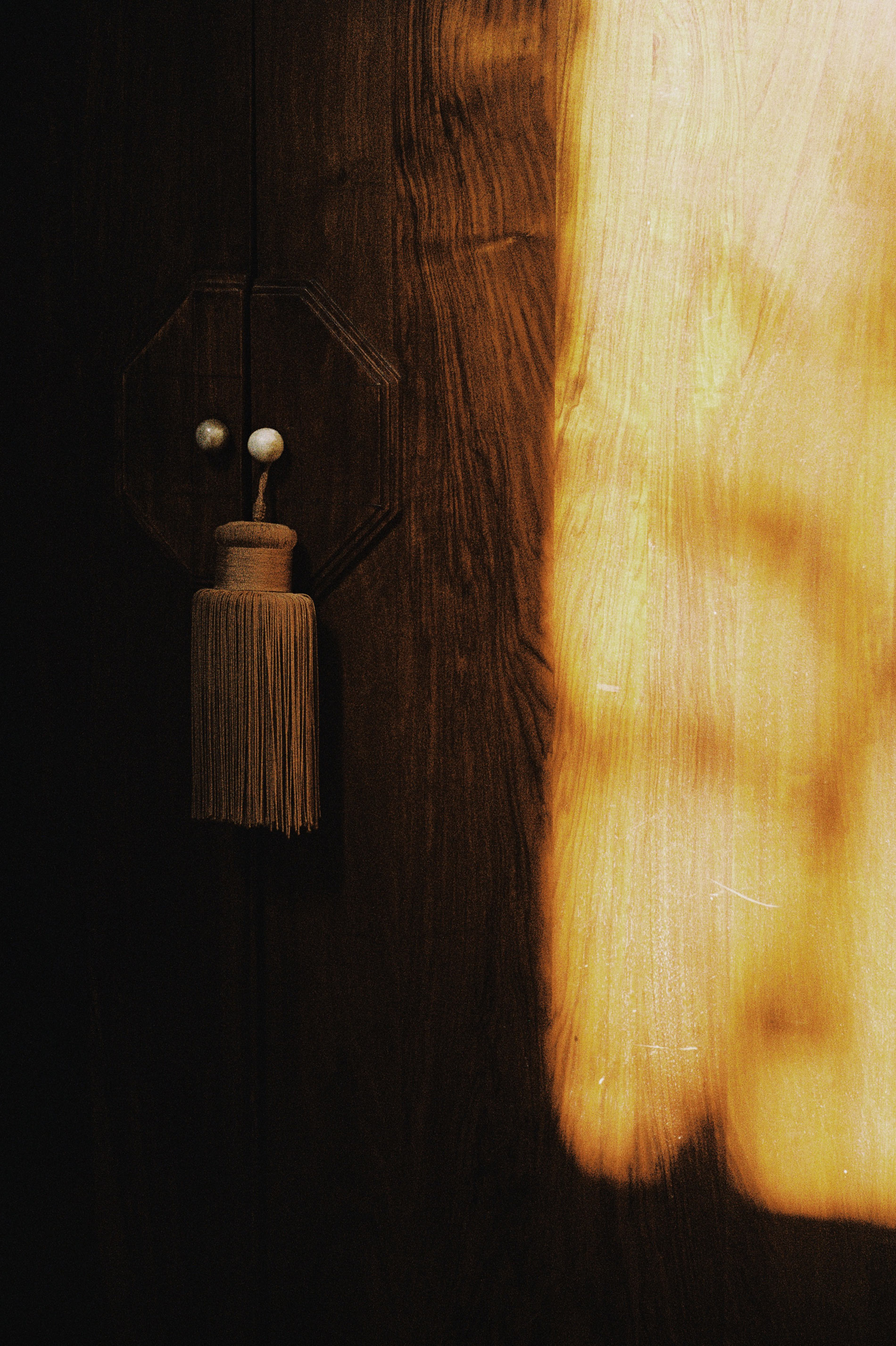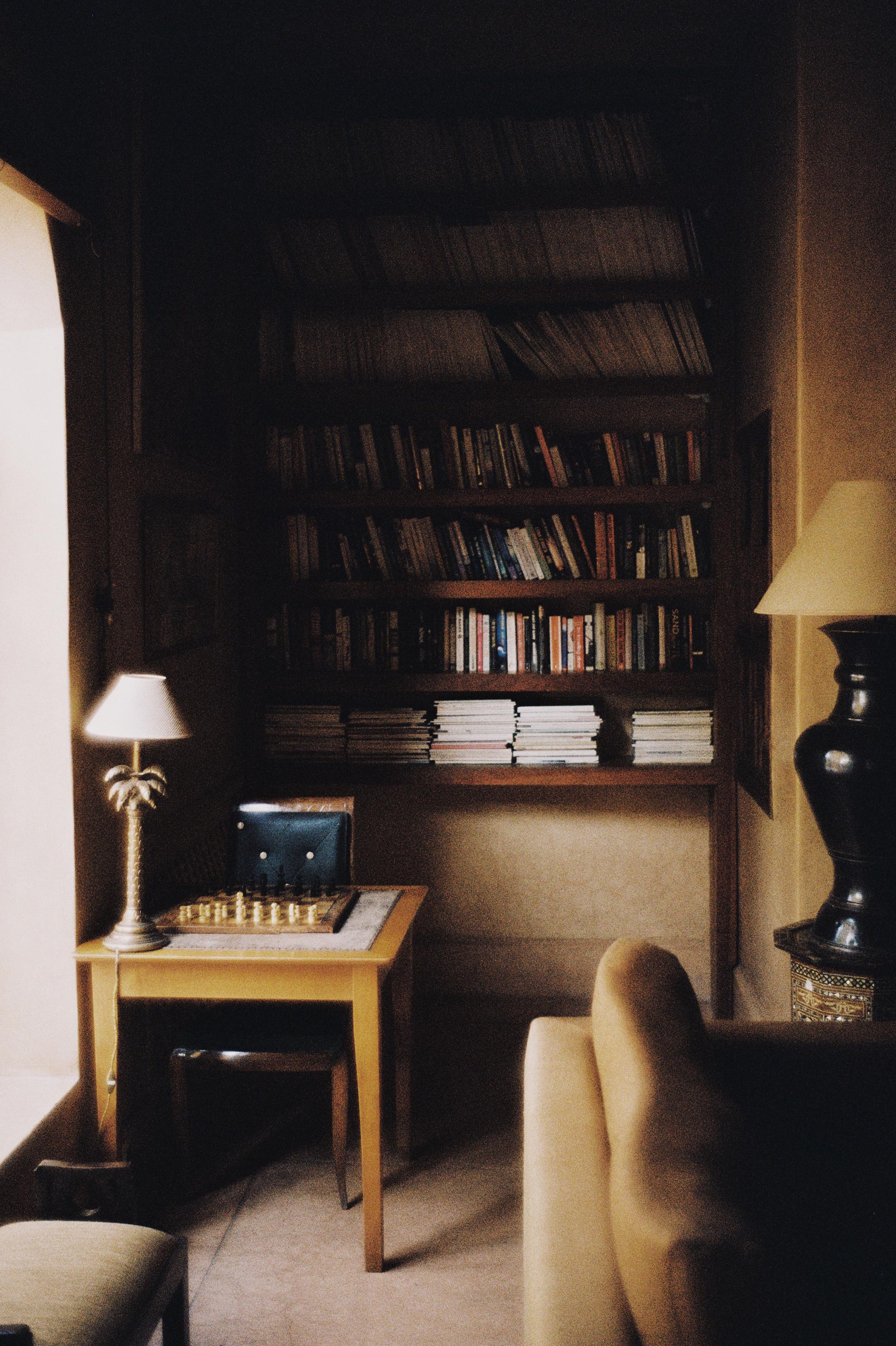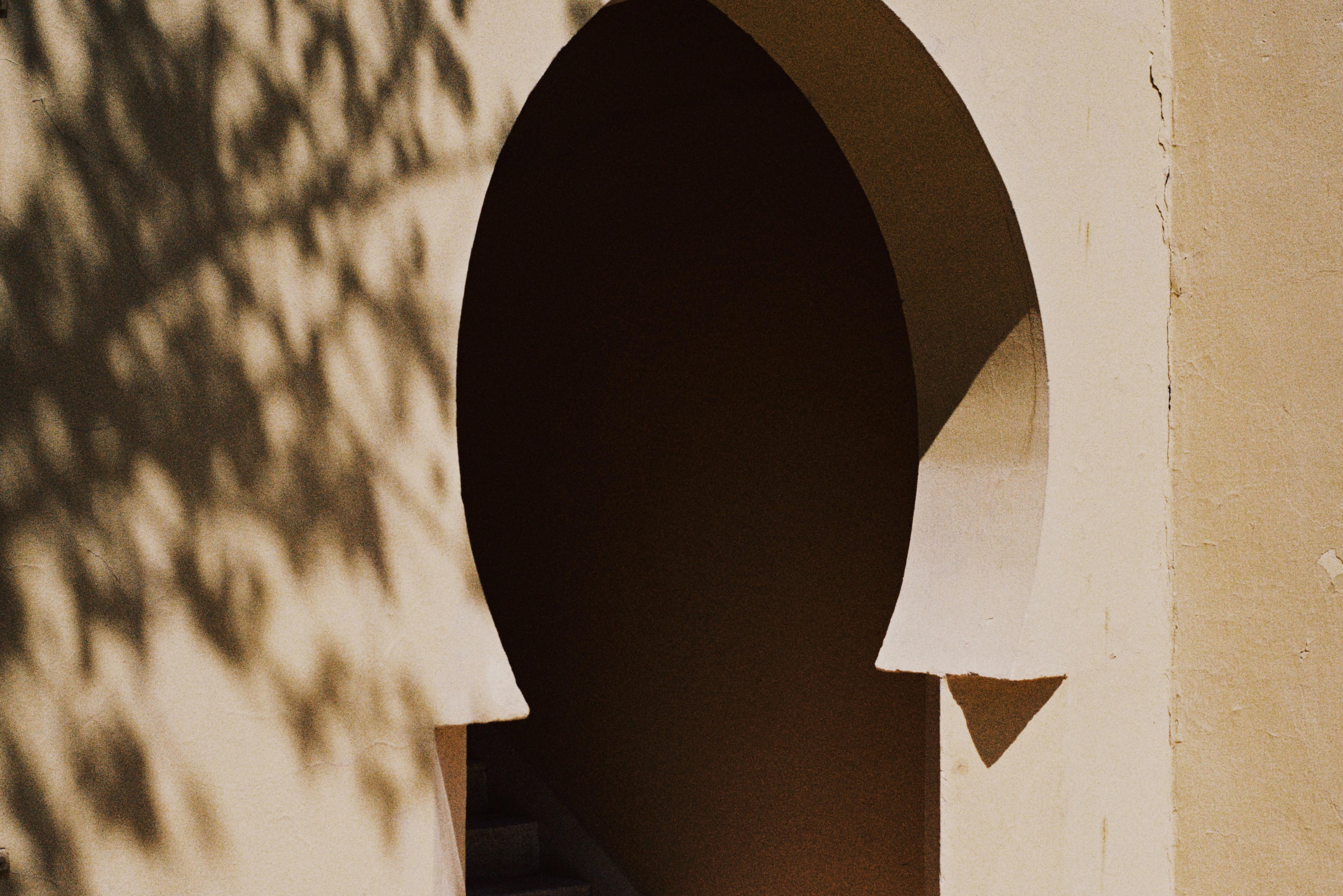Jnane Tamsna
garden of paradise
Marrakech, especially the medina, is loud and bustling. The atmosphere is completely different in the sophisticated Palmeraie district, outside of the city. Over sandy desert roads, the route leads to Jnane Tamsna—A paradisiac estate with five villas surrounded by green gardens.
JNANE TAMSNA is not just a standard 5-star luxury hotel. It is a holistic philosophy. The Senegalese-Parisian lawyer and designer Meryanne Loum-Martin and her husband, the American ethnobotanist Gary Martin, have created a place of authenticity. The property has twenty-four rooms spread over five houses and also boasts five pools, a tennis court and a large nine-acre garden. An integral part of the hotel is the spirit of the owners, which is reflected in the atmosphere and design.
Everything blends in perfectly and naturally with the surroundings. Nature was taken into consideration when building the houses, which were built around the existing palm trees, like the large date palm tree that stands in front of the arched entrance of the hotel. The decor and all furnishings are a tribute to Moroccan and Moorish design traditions, African decorative arts and objects from Loum-Martin’s diverse travels. Each room is unique and individually furnished.
A
All buildings are surrounded by nature and lush gardens. Lunch and dinner are served in the organic garden under olive trees, where guests are served a menu that changes every day according to the available ingredients in the hotel’s own vegetable patch. The dishes draw on Morocco’s rich culinary heritage and blend it with modern Mediterranean cuisine. As a renowned and passionate ethnobotanist, Gary Martin cultivates the property’s drought-resistant plants and vegetables using permaculture techniques. A special irrigation system is used that requires very little water—ideal for the dry region.
JNANE MEANS GARDEN OF PARADISE IN ARABIC
TDR magazine got the chance to sit down with Meryanne Loum-Martin for an interview and get a tour of the premises from her daughter Thaïs Sala. Meryanne Loum-Martin took on multiple roles for Jnane Tamsna, she is responsible for its architecture, interior concept and even furniture design.
What does Jnane Tamsna mean? What language does the term come from?
Jnane means garden of paradise in Arabic and Tamsna the name of all the properties I did before in Marrakech, Dar Tamsna from 1989 to 2004 and Ryad Tamsna from 1999 to 2004. So since our hotel was to be about gardens and architecture, I called it Jnane Tamsna.Tell us more about the design concept of Jnane Tamsna.
First as I did the architecture of the property, I had a map done of the existing trees. Then I slid the architecture between the trees so there is firstly full respect of nature and the environment and, secondly, permanent dialogue between indoors and outdoors. For the interior design, indeed I started buying objects, art, textiles I liked before having found the land. I knew that I would do this one day and that of course each room had to be different. So I got the impression that the objects and furniture were very carefully selected (every room is unique).
What objects can be found in the hotel and where do they come from?
I used to travel much more and always brought back things that I had found from an antique market in the US to a silk shop in India, from the Grand Bazaar of Istanbul to inherited family furniture.
Your daughter told me that some of the furniture was designed by you. Where does your inspiration come from?
Yes, I did a lot of the lighting, sofas, armchairs…I like working with local craftsmen and integrate elements like camel bone, or horn. Both being totally sustainable. My inspiration comes from both Morocco and Sub Saharan Africa.
What role does nature play for Jnane Tamsna?
Nature is key for us. Not only because, my husband is a well-known environmentalist and an ethnobotanist, but also because we both need to live in and design spaces which are true, meaningful, purposeful and connected. The first requirement for this is to be rooted in both the local nature and the local culture.
Can you tell me more about the garden concept?
The garden concept is adapted to the fact that we have little water and that we will have less and less. Furthermore, it respects the concept of traditional oasis gardens where each drop of water was optimized. Lastly, we only plant species adapted to this latitude. So we absolutely ban grass, which makes no sense when you are so close to the desert. We favor useful plants so we grow our own food. We recycle water for ornamental plants. And most of all the concept of the garden is just like the interiors, it is timeless. My husband applies regenerative soil methods which have turned with minimum water a whole acre into a forest within 18 months. We bought a lnad which had 600 century old palm trees and the idea is to constantly add to the initial bones of the place, vegetation which does not feel or look like an “intruder”—artificial, senseless. Our ultimate compliment is when people think that the garden has always been there when it is in constant planting and evolution.
During the tour, your daughter told me that all the ingredients used in the food are local. Do you also grow anything in your hotel or garden?
Yes, we grow dozens of edible food from Japanese vegetables to Mediterranean herbs, Caribbean chiles or Italian salads. And what we don’t grow ourselves we get from organic producers.
Snake Ring Petite by OLE LYNGGAARD COPENHAGENin 18k Gold with rutile quartz and six diamonds,displayed on a bowl of fruits at JNANE TAMSNA
Marrakech has always been a place for high society and the creatives of bygone eras. Most notably Yves Saint Laurent, who had a very special relationship with the city. Even today, creative people are still drawn to Marrakech, including the Jnane Tamsna.
The entire hotel is often rented out for parties and weddings, exclusive events and lavish dinners. Past guests have included Giorgio Armani, Jean Paul Gaultier, Gianfranco Ferré and the Missoni family.
in partnership with JNANE TAMSNA
shot on location in MARRAKECH, MOROCCO
on 35 MILLIMETER FILM
